Beneath the Surface of the Little Miami - Preserving and Restoring Freshwater Mussel Habitats
- Mary Ward Kuramoto
- Mar 9, 2022
- 4 min read
Providing a better environment for declining freshwater mussel populations – Environmental DNA (eDNA) sample gathering and analysis supporting potential reintroduction of live freshwater mussels into nurturing Little Miami River Ecosystems.
The Problem
Over the past three decades the freshwater mussel populations of the Little Miami River have declined. Freshwater mussels are a key ingredient to river health, providing filtration for the waters of the Little Miami, and in turn supporting a healthy river for fish and wildlife. Currently, there are about 36 species of freshwater mussels calling the Little Miami home. However, based on recent surveys along the Little Miami River and its major tributaries, freshwater mussel numbers and species have continued to decrease dramatically.
The mission to conserve them is two-fold: 1) Support efforts to seek and identify the best places on the Little Miami River, in terms of habitat and fish species, and, 2) Help develop a strategy and a plan to reintroduce propagated mussels into those places where mussels can flourish and survive on their own.
Freshwater Mussel Habitats
Freshwater mussels require water that is free from pollutants, good in-stream habitat, and a diversity of fish species to thrive in the Little Miami River. The majority of freshwater mussels have a symbiotic relationship with certain species of fish, called “host fish”.
Host fish serve as surrogates for the larval stage of freshwater mussels called glochidia. Female freshwater mussels attract host fish using biological lures that look like other animals that the host fish like to eat. Once a host fish bites into the lure, glochidia are released into the water and attach to the gills and other parts of the host fish. The glochidia live as parasites feeding on host fish while they grow and mature. This process does not harm the host fish. As the glochidia mature, they release from the host fish and embed into the river substrate to begin living and reproducing on their own. All but one species of freshwater mussels in the Little Miami River use fish as hosts, namely, the salamander mussel that relies on the mud-puppy salamander as its host species.
A healthy habitat is critical. Mussels are particular as to where they can live and reproduce. They require a silt-free, suitable streambed (substrate), where they can burrow into sand, gravel, and cobble rock-strewn bottoms, hide from predators, strain nourishment from moving water, and attract suitable host fish needed to protect and nourish them during their larval stage of development.
The Project
Two grants from the Ohio Department of Natural Resources (ODNR) were awarded in 2021 to the Little Miami Conservancy (LMC). Those grants provide funding that has helped local volunteer teams study and document fish diversity on the Little Miami River. LMC volunteers use conventional fishing gear to catch and study the fish that are present. In addition, use of cutting-edge environmental DNA (eDNA) stream water sampling at sites along the Little Miami make it possible to process and sequence eDNA using environmental laboratories. Using eDNA makes it possible to determine and document most species of fish in the Little Miami without capturing, disturbing or harming them in any way. Most importantly, the diversity of all fish species and potential host fish can be determined without every seeing or touching them.
The ultimate goal is to help find the best locations for the eventual re-introduction of propagated mussels into the Little Miami River, helping to stabilize and restore their declining populations. The project entails both eDNA testing and conventional fishing at 50 locations spanning the upper river from Clifton Gorge downstream about 110 miles to the lower Little Miami River near its confluence with the Ohio River. At some point it is hoped that the project described will include the introduction of juvenile mussels into the Little Miami at the most promising sites, as identified by the work done above.
The Progress
Volunteer teams from the LMC program have concluded the 2021 round of eDNA sampling. The process consisted of gathering water via the eDNA kit. These kits were then sent to a laboratory for assessment. Prevalent fish species will be tracked from the DNA present in the river water. The kit has the capability to track species up to 100 meters from the test location. This information is vital in determining the ongoing health of the Little Miami and to understand how to best support existing fish and wildlife. In addition, it will provide a good indication of the best places for mussel re-introduction based on the potential presence of host fish. The most recent sampling occurred, in early December, 2021 and included sites at both the headwaters, and the mouth of the Little Miami River.
Volunteer crews visited several sites in Fall, 2021 for eDNA sampling,
· John Bryant State Park
· Jacoby Road Public Access
· Massie Creek
· Xenia Fairgrounds Road Access
· Glen Thompson Reserve Public Access
· The Narrows
· Washington Mill Bridge
· Caesar Creek Headwaters
· Confluence of Little Miami and the Ohio River
· Fosters Bridge (relocation construction site)
Lab results are still being evaluated and will be used to determine where future freshwater mussels may be introduced.
Stay tuned as the LMC continues to work on this major project - maintaining the health and wellbeing of the Little Miami National Wild and Scenic River.
.jpeg)


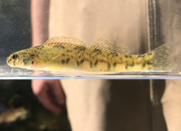
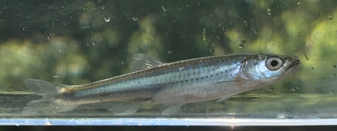
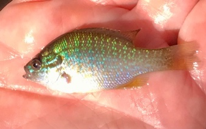
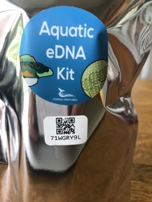


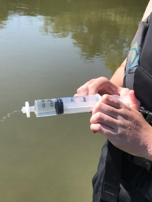

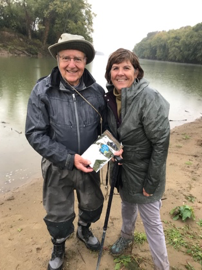







Comments